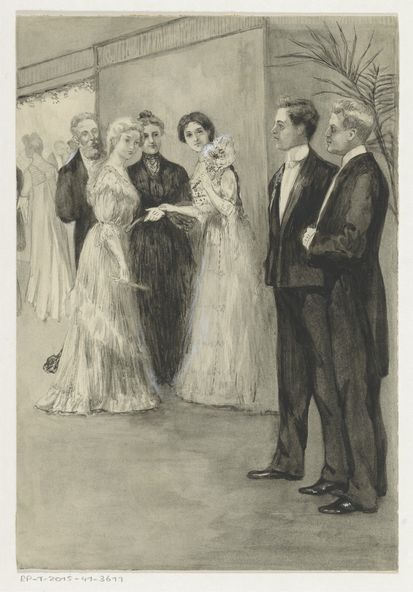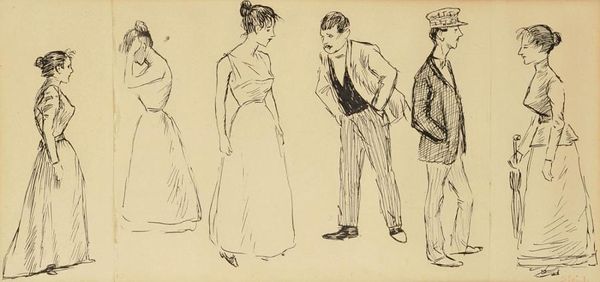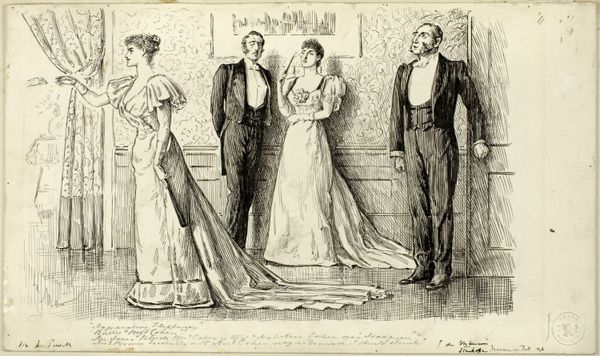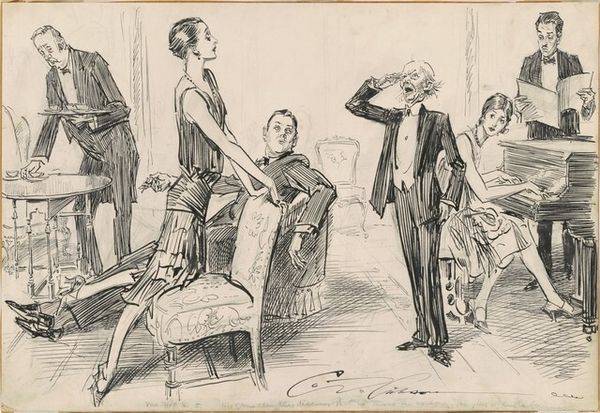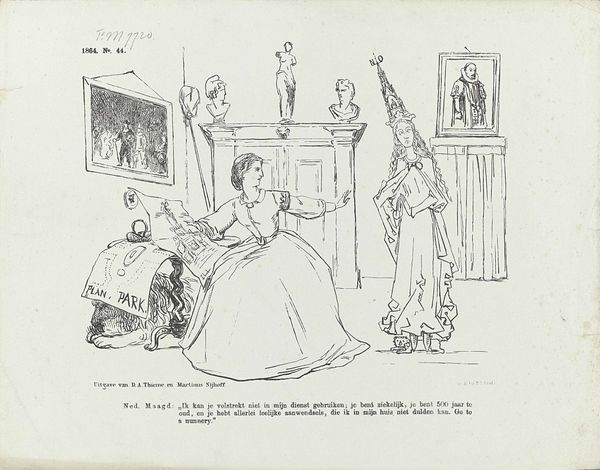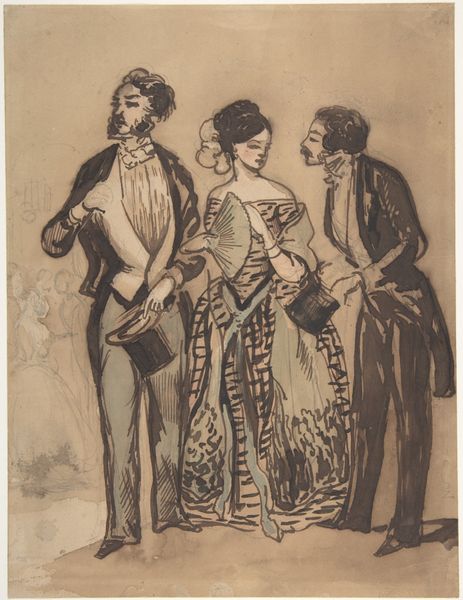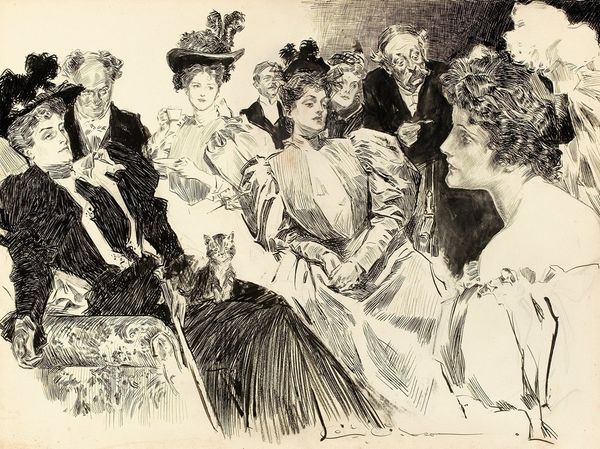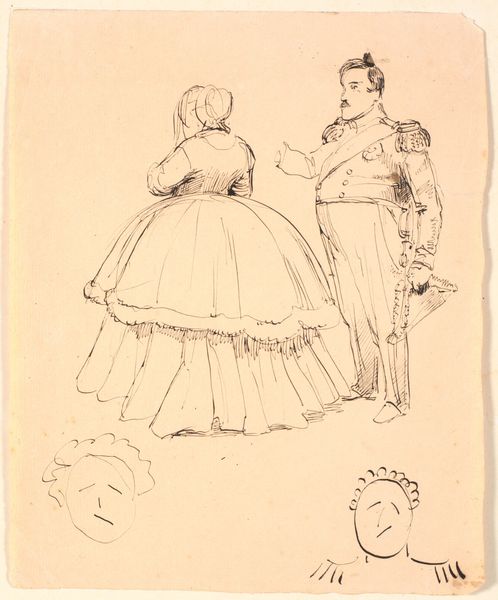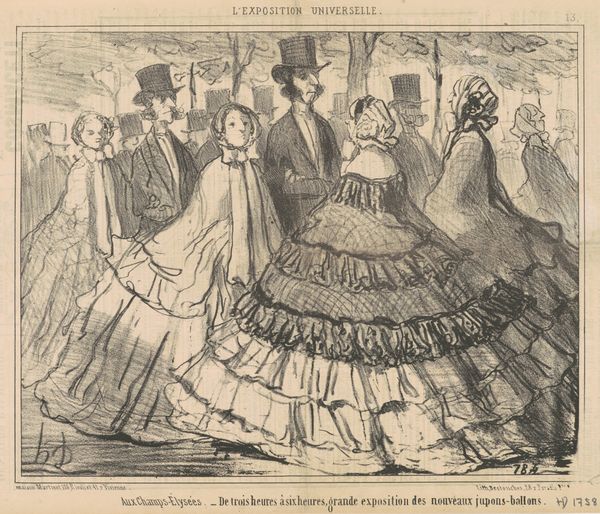
drawing
#
portrait
#
drawing
#
caricature
#
figuration
#
line
#
genre-painting
#
academic-art
Copyright: Public Domain: Artvee
Editor: This is Charles Dana Gibson's drawing, "The American Abroad; Some Features of the Matrimonial Market," created in 1894. It's a fairly large ink drawing, depicting two men flanking a woman, with another man to her right. There's something subtly unsettling about their posture and expressions; it feels satirical. What's your interpretation of the social dynamics at play here? Curator: Indeed. This drawing reveals much about the societal expectations and economic undercurrents of the Gilded Age. Observe how Gibson exaggerates features – the stout man's bulging eyes, the bowed suitor, the sleek and pompous posture of the rightmost gentleman. This exaggeration is not merely caricature, but a coded language, a visual shorthand. Editor: Coded how? Curator: The ‘American Girl,’ later dubbed the ‘Gibson Girl,’ was a symbol of national pride and beauty. The title points to the "Matrimonial Market," alluding to wealthy American heiresses marrying European aristocracy. But consider what those symbols communicate: Status, wealth, but also, potentially, a loss of identity, a transaction of cultural capital. What kind of “currency” do you believe is exchanged in this “market?” Editor: Perhaps it's the American wealth for the European titles, maybe? Curator: Precisely. The woman's neutral expression might even reflect the constrained position such women often found themselves in, pawns in a game of social and economic maneuvering. It prompts us to think of how such depictions shape and reinforce those beliefs across generations. Editor: That’s a much richer reading than I initially had! The expressions take on a whole new layer of meaning when you consider that exchange. Thanks for highlighting the details in a way that shows just how symbolic these seemingly minor details can be.
Comments
No comments
Be the first to comment and join the conversation on the ultimate creative platform.

